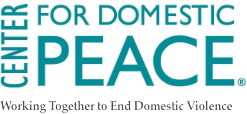For Schools
Prevention in Schools
Schools have a responsibility to give students the skills they need to succeed in the classroom and in life. Schools play an important role in young people’s lives. While students learn many important academic skills, they are also developing vital social and life skills at schools. School are facing many competing demands. Staff and instructional time is limited, so how can schools provide the foundation that students need? How can schools afford to prevent the many types of violence they are facing? How can we ensure that schools are addressing adolescent dating abuse? To answer these questions schools can turn to primary prevention strategies.
The Stat:
- Nearly 1.5 million high school students nationwide experience physical abuse from a dating partner in a single year.
- One in three adolescents in the U.S. is a victim of physical, sexual, emotional or verbal abuse from a dating partner, a figure that far exceeds rates of other types of youth violence.
- One in 10 high school students has been purposefully hit, slapped or physically hurt by a boyfriend or girlfriend.
School connectedness is an important protective factor, it is a protective factor against dating abuse, sexual violence, youth violence, bullying, and suicide. School connectedness is the belief of students that the adults and peers in the school care about their learning as well as about them as individuals. Building school connectedness is an effective prevention strategy that schools could use to address many types of violence and increase academic achievement. Strategies that build school connectedness will also incorporate building community connects and fostering positive youth and adult relationships, which are also important protective factors against violence.
School connectedness is not just about preventing violence, it also improves academic outcomes for students. Students that feel connected to their school have better school attendance, are more likely to stay in school, and have higher grades and test scores. The benefits of school connectedness are clear, but how can administrators, staff, and parents increase school connectedness for students?
Center for Domestic Peace has a long history of working within the schools and colleges in Marin. Most recently, Marin Youth Services was formed to address intervention strategies, and currently runs a youth text line, where young people and parents can access information and referrals. MYS also has office hours at Huckleberry Youth Services in San Rafael. Youth actively work in their schools through the Marin Against Youth Abuse committees to create awareness campaigns and provide leadership to dating abuse strategies.
The Centers for Disease Control and Prevention provides great resources on how to foster school connectedness. Here are a few tips:
- School administrators can provide significant leadership in building school connectedness. Reading the CDC Factsheet for School Administrators is a good first step in thinking about effective strategies for schools.
- School administrators must be held accountable for policies that raise awareness, protect victims and hold abusers accountable. Our Marin Against Youth Abuse staff can help with this. You can reach them by calling 415.526.2535.
- Teachers play a pivotal role in building school connectedness. According to the CDC (2009), “good classroom management—including having set routines and guidelines, adequate planning, and fair consequences for misbehaviors—is critical to establishing a positive school environment and increasing school connectedness”. Further information for teachers and other school staff can be found on the CDC Fact sheet.
- Parents involvement and engagement with their children’s academic lives builds school connectedness. Some schools offer many ways for parent engagement, including flexible scheduling for parent-teacher conferences, information provided in multiple languages, volunteer opportunities, and newsletters and updated websites with school information. If schools do not offer different ways for parents to engage with the school, parents can start by having conversations with school leadership about how to make parent engagement possible and easy for families. Here are some additional information on the CDC Factsheet for Parents and Families.
Building school connectedness as a primary prevention strategy is an effective strategy for schools to use. By building school connectedness schools are building better academic outcomes for students, preventing violence, including adolescent dating abuse, and building additional protective factors that will only benefit students. In the face of competing demands and limited resources primary prevention strategies, such as school connectedness, are an important investment for schools.
Take A Stand for Healthy Relationships is an exciting new program from the National Coalition Against Domestic Violence (NCADV) and Discovery Education that teaches students how to understand and build healthy relationships. New standards-aligned curriculum will encourage important skills in communication and self-awareness.
Also, learn about our C4DP programs for teens and therapy groups for youth child witnesses.
